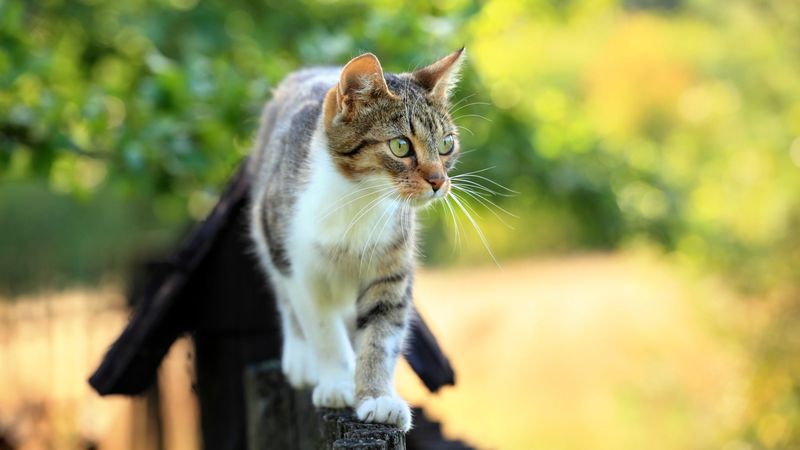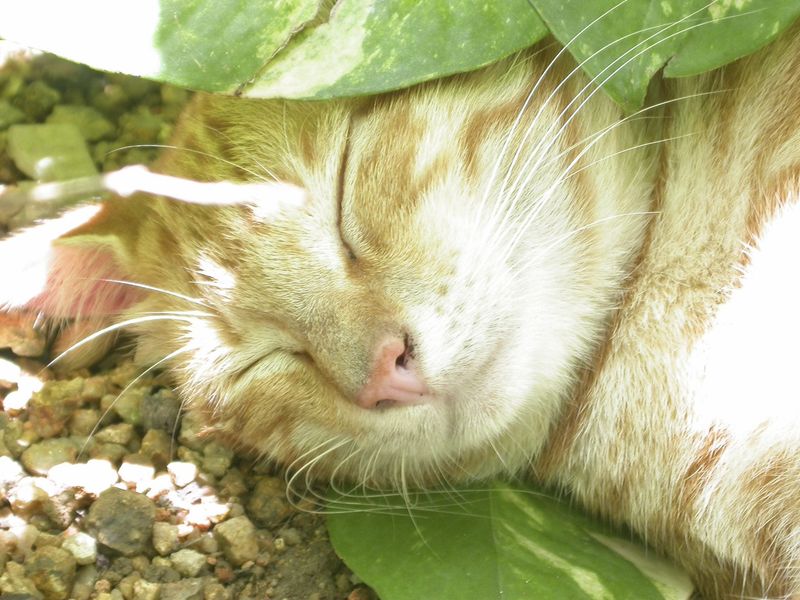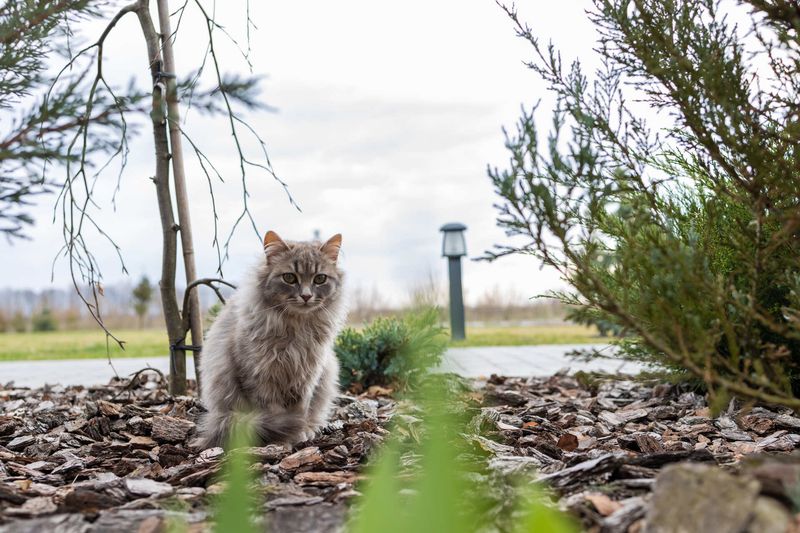📖 Table of Content:
- 1. Hunting Wild Prey: The Predator Within
- 2. Territorial Patrols: Defending Their Kingdom
- 3. Secret Social Lives: Friends and Frenemies
- 4. Hidden Resting Spots: Secret Napping Locations
- 5. Weather Watchers: Nature’s Early Warning System
- 6. Secondary Families: Your Cat’s Other Home
- 7. Environmental Explorers: Curiosity Satisfaction
A cat slipping silently out the door is more than just a quick stroll—it’s the start of a secret life. Outdoor cats often vanish for hours or even days, only to return as if nothing happened. Their fur may be dusty, their ears nicked, or their gaze unusually smug.
These mysterious excursions are more than just random wanderings. Cats follow ancient instincts, exploring territory, hunting, socializing, or simply claiming their place in the world. Each outing adds a layer to the independent, self-assured personality that defines them.
Though their outdoor lives remain mostly unseen, the clues left behind speak volumes. A scratch here, a full belly there, or a confident strut hint at untold adventures. By better understanding these behaviors, caretakers can learn how to support their cat’s nature while helping them stay safe.
1. Hunting Wild Prey: The Predator Within
Your sweet house cat transforms into a skilled hunter the moment they step outside. Cats stalk mice, birds, insects, and even small reptiles with impressive focus and patience. Those twitching whiskers and alert ears aren’t just for show – they’re finely tuned hunting instruments.
Most cats don’t hunt because they’re hungry. The predatory drive runs deep in their DNA, leftover from their wild ancestors. Even well-fed cats will spend hours crouching in tall grass or beneath shrubs, waiting for the perfect moment to pounce.
Many cat owners first discover this hidden talent when their pet proudly delivers a “gift” to the doorstep – definitive proof of their outdoor accomplishments.
2. Territorial Patrols: Defending Their Kingdom
Cats are naturally territorial creatures who take property lines very seriously. Your kitty likely has a specific route they follow daily, checking boundary markers and refreshing scent signals along the way.
These patrols often follow invisible lines that make perfect sense to cats but remain mysterious to humans. A typical outdoor cat territory spans about 200 yards from your home, though male cats tend to roam farther than females.
During these security checks, cats rub against objects, scratch trees or posts, and sometimes spray urine – all methods of announcing their presence to other neighborhood cats. Think of it as your cat’s version of changing the locks and posting “No Trespassing” signs.
3. Secret Social Lives: Friends and Frenemies
Contrary to their reputation as loners, outdoor cats often maintain complex social networks. Your independent feline might actually have regular meetups with other neighborhood cats. These gatherings happen at shared neutral zones like empty lots or quiet parks.
Cat relationships range from friendly allogrooming sessions (mutual cleaning) to tense standoffs that occasionally escalate into dramatic confrontations. The social hierarchy shifts constantly, with cats gaining or losing status based on their confidence, health, and fighting abilities.
Some outdoor cats form loose colonies where they share resources while maintaining personal space. Others prefer solitary lifestyles, interacting with fellow felines only when necessary or during mating seasons.
4. Hidden Resting Spots: Secret Napping Locations
With sleep taking up most of their day, outdoor cats seek out quiet, sheltered places to rest undisturbed. That “missing” pet could simply be curled up in a shed, beneath a deck, or camouflaged within a thick hedge.
These hideaways serve multiple purposes – they provide shelter from weather extremes, protection from predators, and quiet retreat from household noise. Cats typically maintain several sleeping spots throughout their territory, rotating between them based on weather conditions, time of day, and safety concerns.
The perfect cat napping spot offers elevation, concealment, and multiple escape routes. Some particularly resourceful outdoor cats even discover ways into neighboring homes, barns, or garages for premium napping accommodations.
5. Weather Watchers: Nature’s Early Warning System
Cats possess remarkable sensitivity to environmental changes that often escapes human notice. Your outdoor explorer can detect shifts in barometric pressure, subtle temperature changes, and approaching storms long before weather apps send alerts to your phone.
This meteorological awareness explains why cats sometimes disappear hours before storms arrive, seeking shelter in advance. Their whiskers act like natural barometers, detecting minute atmospheric changes.
During pleasant weather, cats maximize outdoor time, soaking up sunshine in carefully selected spots that provide both warmth and safety. They follow the sun’s path throughout the day, relocating as shadows shift – nature’s original solar-powered heating system.
6. Secondary Families: Your Cat’s Other Home
Many outdoor cats maintain relationships with multiple households, effectively adopting several families without anyone realizing the arrangement. Your beloved pet might be enjoying meals, attention, and even occasional indoor privileges at other homes in your neighborhood.
These resourceful felines quickly learn which houses offer food, shelter, or affection, and adjust their schedules to maximize benefits from each location. Some cats become so proficient at this multi-home lifestyle that each family believes the cat belongs primarily to them.
The phenomenon is common enough to have earned nicknames in different cultures – “six-dinner Sid” in England or “neighborhood cat” in America. Your missing cat might simply be visiting their “other family” during those mysterious absences.
7. Environmental Explorers: Curiosity Satisfaction
Cats possess insatiable curiosity that drives them to investigate every change in their environment. Construction projects, new garden installations, or even recently parked vehicles become irresistible attractions for your feline explorer.
This investigative behavior serves important survival purposes – helping cats identify new threats, resources, or opportunities in their territory. Their sensitive whiskers and acute hearing allow them to thoroughly examine spaces humans would never notice or access.
Urban cats become particularly skilled at finding unique pathways through neighborhoods, discovering shortcuts through yards, under fences, or along rooftops. These secret routes allow efficient travel between destinations while avoiding dangers like busy streets or aggressive dogs.







